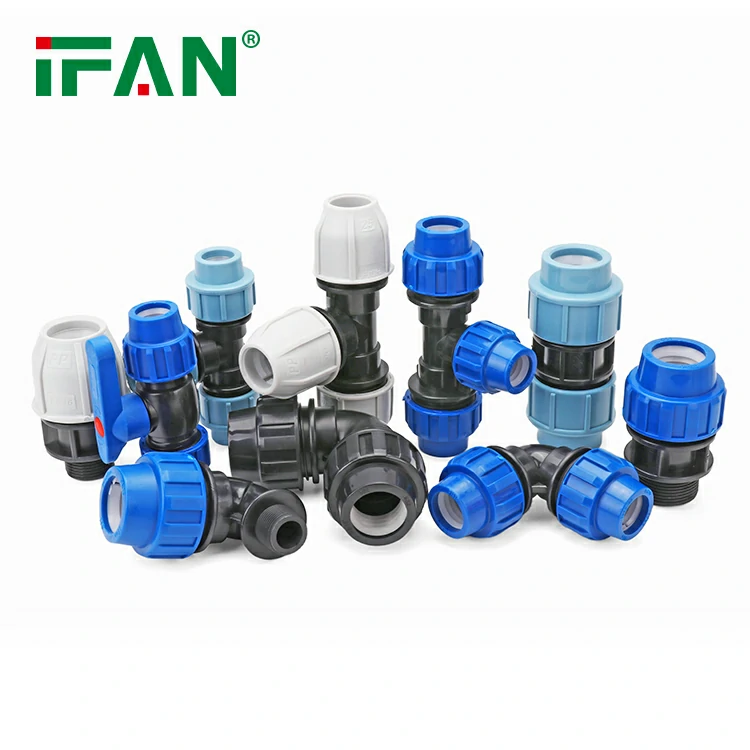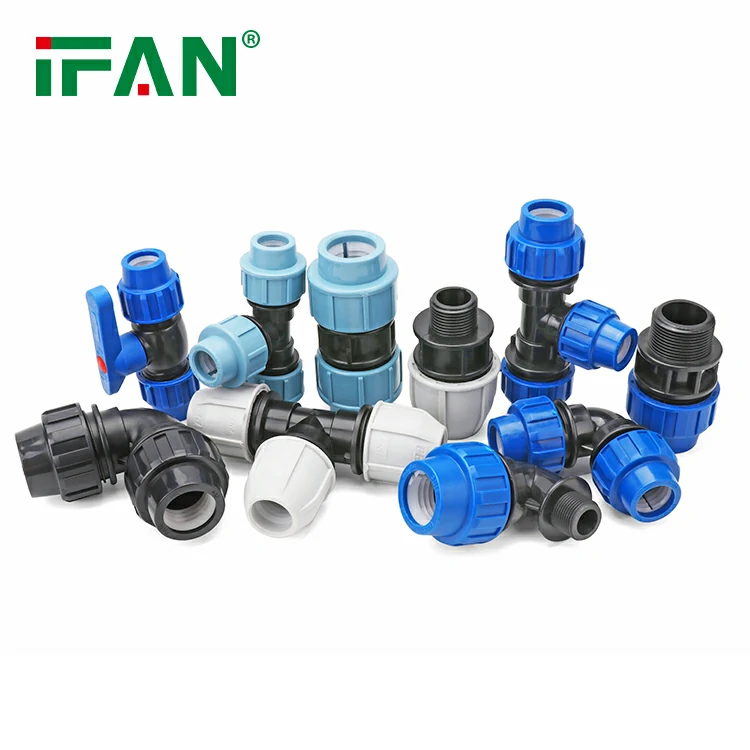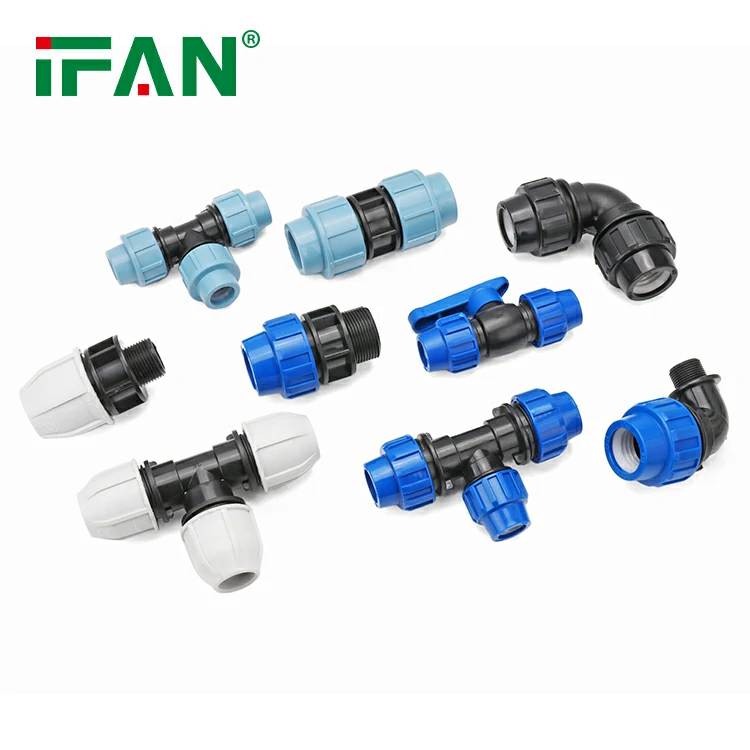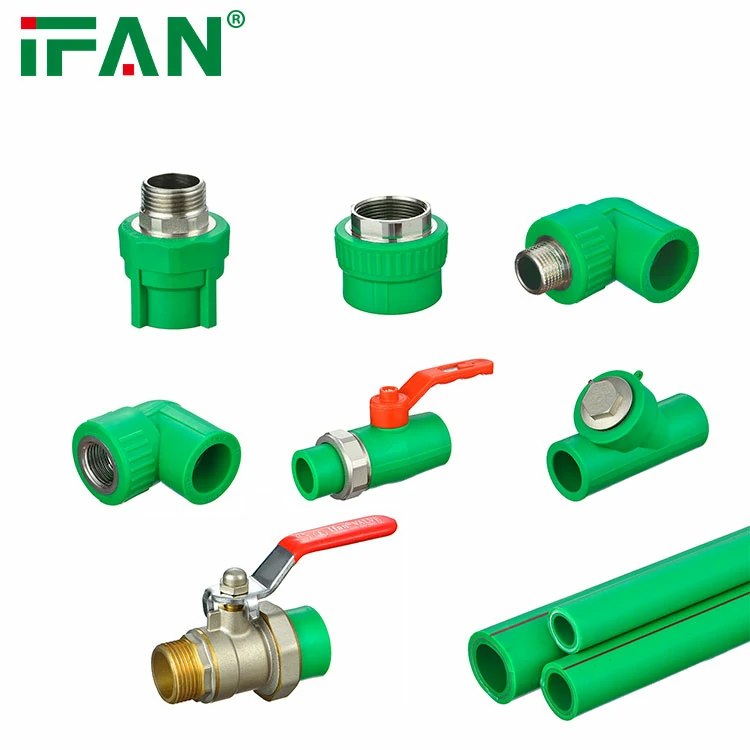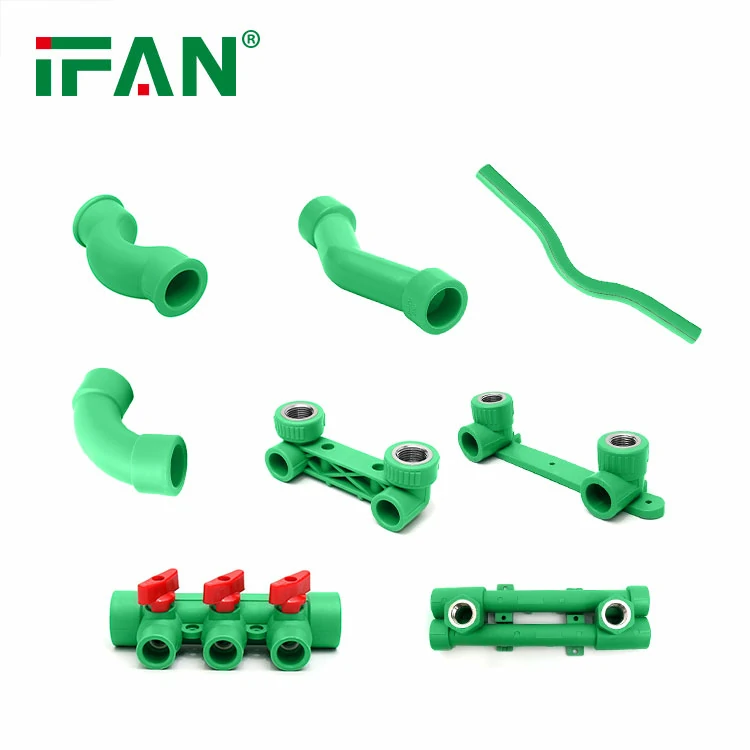IFAN factory 30+ years manufacture experience support color /size customization support free sample.Welcome to consult for catalog and free samples.This is our Facebook Website:www.facebook.com,Click to watch IFAN’s product video.Compared with Tomex products, our IFAN products from quality to price are your best choice, welcome to buy!
Plumbing systems are an essential part of any building, ensuring the efficient delivery of water and waste management. As technology has advanced, so have the materials used in plumbing. PPR fittings (Polypropylene Random Copolymer) have emerged as one of the most popular choices for modern plumbing systems due to their exceptional properties. This article explores the benefits of using PPR fittings in plumbing systems, highlighting their advantages over traditional plumbing materials and their role in sustainable construction.
What Are PPR Fittings?
PPR fittings are made from Polypropylene Random Copolymer, a type of thermoplastic material known for its durability, resistance to corrosion, and excellent thermal stability. This material is commonly used for hot and cold water distribution systems, underfloor heating systems, and even in industrial applications due to its strength and flexibility.
The primary appeal of PPR fittings lies in their long-lasting performance, cost-effectiveness, and environmental benefits. Let’s dive deeper into the various advantages of choosing PPR fittings for your plumbing needs.
Key Benefits of PPR Fittings
1. Durability and Longevity
One of the most significant advantages of PPR fittings is their impressive durability. Unlike traditional plumbing materials like copper, steel, or PVC, PPR fittings are highly resistant to corrosion and scale buildup. This resistance makes them an excellent choice for both residential and commercial plumbing systems, especially in areas with hard water.
PPR fittings are not prone to rust or degradation over time. In fact, they are known to last for over 50 years, with minimal maintenance required. The long lifespan of PPR fittings makes them a cost-effective option in the long run, as they require fewer replacements compared to other plumbing materials.
2. Corrosion-Resistant
Traditional plumbing materials such as steel and copper are vulnerable to corrosion, particularly in areas with high humidity or hard water. Over time, this corrosion can lead to leaks, pipe failures, and expensive repairs. However, PPR fittings are naturally resistant to corrosion, meaning they will not rust, corrode, or degrade when exposed to water or various chemicals.
The corrosion resistance of PPR fittings makes them a superior option for plumbing systems in environments where traditional materials might struggle, such as coastal areas with high saltwater exposure or regions with hard water.
3. Cost-Effectiveness
While the upfront cost of PPR fittings may be slightly higher than PVC, they are still far more affordable than copper or steel plumbing systems. The cost of installation is also lower, as PPR fittings are lightweight and easy to handle. Unlike copper pipes, which require soldering, PPR fittings are joined using heat fusion, ensuring a secure, leak-proof connection without the need for specialized tools or techniques.
Given their durability and minimal maintenance costs, PPR fittings are an investment that pays off in the long term. They do not require frequent repairs or replacements, making them an excellent choice for budget-conscious homeowners and businesses.
4. Energy Efficiency
Another significant benefit of PPR fittings is their ability to improve energy efficiency. These fittings offer excellent insulation properties, which help reduce heat loss in hot water systems. This insulation helps maintain the temperature of the water within the pipes, reducing the need for additional heating.
In comparison, materials like copper are excellent conductors of heat, which can lead to significant energy loss in hot water systems. PPR fittings provide better thermal insulation, helping to lower energy costs in the long run.
5. Eco-Friendly
In today’s world, sustainability is a key consideration when choosing materials for construction projects. PPR fittings are made from recyclable materials, making them an environmentally friendly choice. Additionally, because they have a long lifespan, they reduce the need for frequent replacements, further minimizing waste and environmental impact.
Moreover, PPR fittings do not leach harmful chemicals into the water supply, which is a concern with some traditional plumbing materials. Their non-toxic properties make them safe for both human health and the environment.
6. Ease of Installation
One of the standout features of PPR fittings is their ease of installation. PPR pipes are lightweight, making them easy to handle and transport. Installation is also simplified by the fact that PPR fittings are joined using heat fusion. This process involves heating the pipe and fitting ends and then fusing them together, creating a secure, leak-proof joint without the need for adhesives, soldering, or welding.
The ease of installation reduces labor costs and time, making PPR fittings an ideal choice for both DIY projects and professional plumbing installations.
7. Versatility
PPR fittings are highly versatile and can be used in a wide range of applications. From residential plumbing systems to industrial uses, PPR fittings can handle both hot and cold water distribution with ease. They are also used in underfloor heating systems, as they can withstand the high temperatures typically found in such applications.
The adaptability of PPR fittings makes them a popular choice for various plumbing installations, from single-family homes to large commercial buildings.
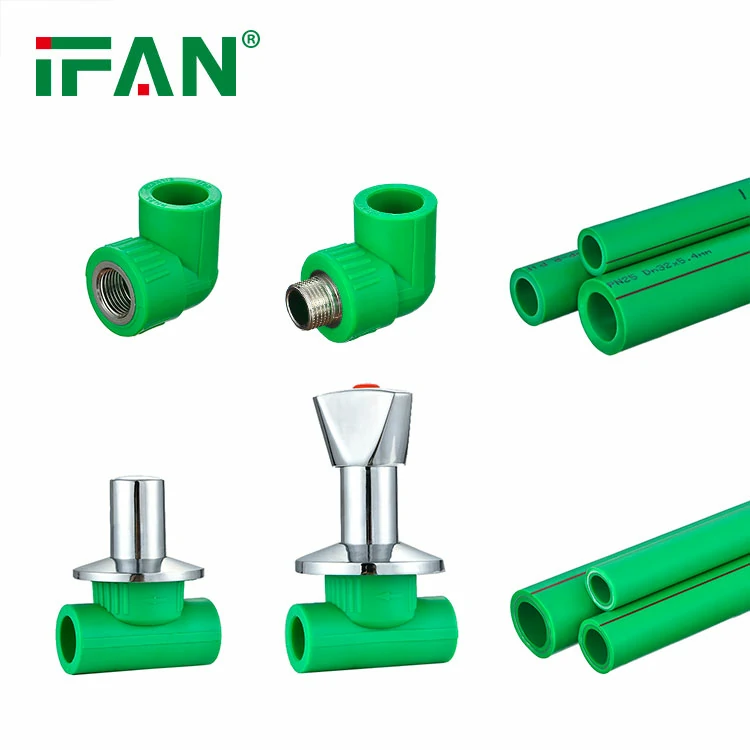
PPR Fittings vs. Traditional Plumbing Materials
Copper
Copper pipes are well-known for their strength and ability to withstand high temperatures. However, copper is prone to corrosion over time, especially in areas with hard water. Additionally, copper pipes are expensive and require professional installation, which can increase the overall cost of the plumbing system.
PVC
PVC pipes are inexpensive and easy to install, but they are not suitable for hot water systems. PVC can warp and degrade under high temperatures, which makes it less reliable for residential and commercial plumbing systems that require hot water delivery.
Steel
Steel pipes are strong and durable but are also susceptible to rust and corrosion. Over time, steel pipes can develop leaks and require frequent maintenance. Steel is also heavier than PPR fittings, making installation more challenging and costly.
PPR fittings, on the other hand, offer a better combination of durability, cost-effectiveness, and ease of installation. They are resistant to corrosion, energy-efficient, and environmentally friendly, making them a superior choice for modern plumbing systems.
When Should You Choose PPR Fittings?
PPR fittings are an excellent choice for various plumbing applications, including:
- Hot and cold water systems: PPR fittings are ideal for both hot and cold water distribution systems due to their resistance to high temperatures and corrosion.
- Underfloor heating systems: The flexibility and thermal resistance of PPR fittings make them perfect for underfloor heating installations.
- Residential and commercial buildings: PPR fittings can be used in both small and large-scale plumbing systems, offering versatility and reliability.
Conclusion
In modern plumbing systems, PPR fittings offer a range of benefits, including durability, cost-effectiveness, energy efficiency, and environmental friendliness. They provide a long-lasting, low-maintenance solution for plumbing systems in both residential and commercial applications. As an eco-friendly and affordable alternative to traditional materials like copper, PVC, and steel, PPR fittings are quickly becoming the preferred choice for many plumbing professionals.
Frequently Asked Questions (FAQs)
1. What are PPR fittings made of?
PPR fittings are made from Polypropylene Random Copolymer, a durable thermoplastic material known for its strength and resistance to corrosion.
2. Can PPR fittings be used for hot water systems?
Yes, PPR fittings are ideal for hot water systems because they can withstand high temperatures without degrading.
3. How long do PPR fittings last?
PPR fittings have a long lifespan and can last over 50 years with minimal maintenance.
4. Are PPR fittings eco-friendly?
Yes, PPR fittings are made from recyclable materials, and their long lifespan reduces waste and environmental impact.
5. How are PPR fittings installed?
PPR fittings are installed using a heat fusion method, which creates secure, leak-proof joints without the need for adhesives or welding.

